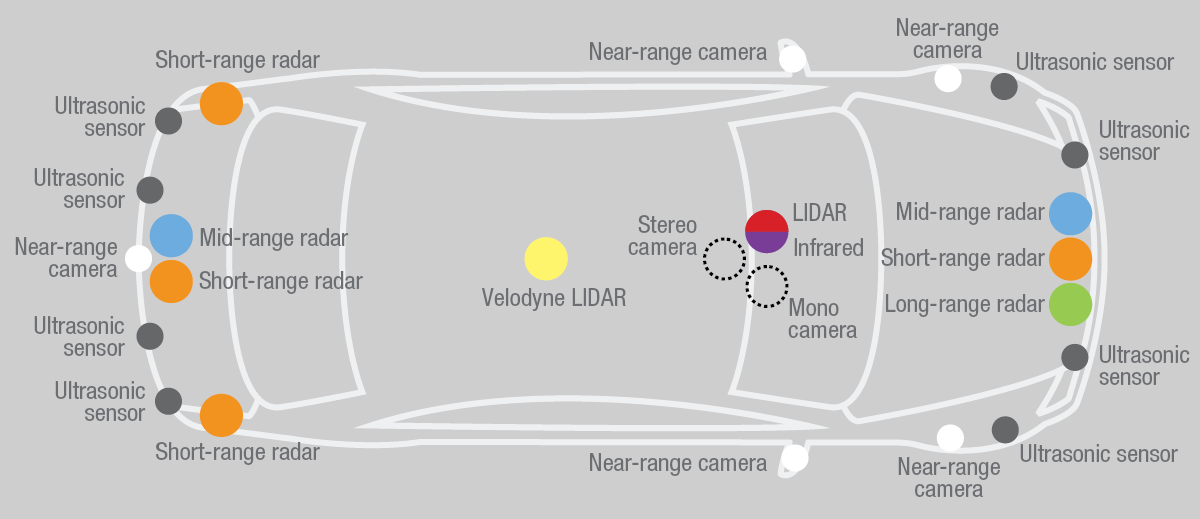Robot cars won't retire crash-test dummies anytime soon
November 10, 2016
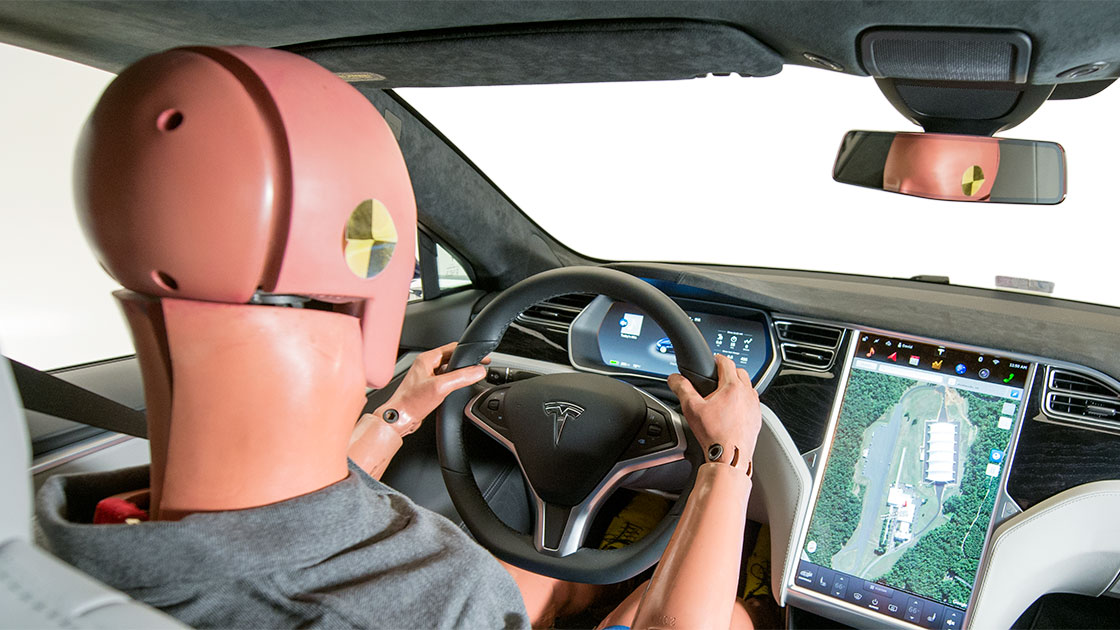
Judging from headlines, one might think dealer lots are brimming with cars that allow drivers to clock out while radar, cameras and other sensors do the navigating. Though the U.S. market is inching toward that reality, consumers can't buy a fully self-driving car and likely won't be able to for many years.
The idea is tantalizing, not only for the convenience factor but also because it dangles the potential of a crash-free future. While that vision may one day come to fruition, it is far too early to retire the Institute's crash-test dummies. There will be many crashes on the road to Vision Zero.
In the near term, the best way to reduce the risk is to renew focus on tried-and-true countermeasures, such as increasing safety belt use and reducing alcohol-impaired driving, and to continue pushing automakers to improve the crashworthiness of vehicles while refining driver assistance systems to address more kinds of crashes.
"The rhetoric has jumped ahead of the technology in many cases," says Adrian Lund, IIHS president. "What many people think of as a self-driving car doesn't exist yet. I can't hop in my car, enter a destination and have it take me from point A to point B.
"What I can do is activate adaptive cruise control to maintain a safe following distance and speed, use lane-keeping assist to center my car and blind-spot assist to monitor adjacent travel lanes. These technologies improve my daily commute and add a layer of safety, but I am still the driver. I can't fall asleep at the wheel."
A rising crash death toll is adding to the urgency to automate driving. U.S. traffic deaths jumped an estimated 10 percent to 17,775 during the first half of 2016 compared with the year-ago period, the National Highway Traffic Safety Administration (NHTSA) said in October. NHTSA aims to eliminate motor vehicle crash fatalities by 2046 and is looking to automated driving technology as one way to help meet that goal.
The potential benefits are immense: Thousands of lives could be saved by preventing crashes caused by driver-related factors. Preventing alcohol-impaired driving, for example, would have saved nearly 7,000 lives in 2014 if all drivers had a blood alcohol concentration below 0.08 percent. Preventing run-off-road crashes would have saved more than 7,500 lives in 2014, while eliminating red-light running crashes would have spared more than 700 lives.
The actual effect on the overall problem of crash deaths and injuries will depend on a number of factors, such as the degree to which automation reduces crashes, when and where automation can be used, and the number of miles driven autonomously.
One scenario suggests that so-called highly automated vehicles will operate mainly on interstates when the technology first becomes available to regular car owners because these roads pose fewer challenges to automated systems. In 2014, about 33 percent of vehicle miles traveled were on interstates, the safest roads per mile driven. If all interstate miles were logged by autonomous vehicles and none of them crashed, the maximum overall benefit would be 17 percent fewer crash deaths and 9 percent fewer crash injuries — equal to the percentage of people who died and were injured in crashes on these roads in 2014, IIHS estimates. Any reduction in the proportion of vehicles or miles driven with automation or anything less than crash-free performance would greatly reduce this estimate.
Share of crash deaths, injuries and vehicle miles traveled on interstates and freeways/expressways in 2014
Whether or not automated vehicles will live up to their safety expectations is a question that can't be answered yet. In the meantime, similar game-changing safety gains could be achieved if human drivers obeyed speed limits and other traffic laws, refrained from impaired driving and used safety belts on every trip.
Promoting proven life-saving strategies is the mission of the Road to Zero Coalition, a newly launched public-private partnership. IIHS is joining with the National Safety Council, NHTSA, the Federal Highway Administration, Federal Motor Carrier Safety Administration and other highway safety organizations in the effort. The coalition also will work to speed adoption of advanced technology and infrastructure designed to prevent crashes.
Meanwhile, IIHS, NHTSA and other organizations have been working to answer key questions about autonomous vehicles in order to bring the future into sharper focus and promote technology that will bring the biggest safety benefits. Below are some answers that have emerged.
What is an autonomous vehicle?
From Google's driverless prototype cars to Tesla's "Autopilot" software, making sense of the technologies, both real and anticipated, can be confusing. In September, NHTSA tried to inject some clarity when it issued its first policy guidelines for autonomous vehicles and adopted SAE International's definitions for levels of automation ranging from none, or Level 0, to fully self-driving, or Level 5. The levels are differentiated by "who" monitors the driving environment and whether or not the human or the automated system is expected to be the safety fallback if things go wrong or the system reaches its limits.
The technology to achieve Level 2 automated driving is available to consumers now. Driver assistance features that can control both the longitudinal and lateral position of the vehicle are available on at least 17 vehicle makes for 2016. Automakers say drivers must continue to be fully engaged in the driving task because the systems have limits. Much of this technology is intended for well-maintained, limited-access high-speed roads in good weather.
"It's crucial that the driver pay attention to the road because the technology isn't foolproof," says David Zuby, IIHS executive vice president and chief research officer.
Road conditions and design are important considerations. A vehicle might operate at Level 4 on an interstate but only at Level 2 on other roads or in bad weather. Until fully automated systems are available, human drivers still will need to bridge the gap.
When it comes to the different levels of automated driving, the boundaries can be blurry. For example, the distinction between levels 2 and 3 has less to do with the system's functionality and more to do with how the human driver interacts with the system. At either level, the vehicle can control longitudinal and lateral position on the road in certain driving environments. The issue is whether the driver must stay engaged with the driving task (Level 2) or is allowed to trust the vehicle to operate on its own (Level 3).
Autonomous cars are ranked by who — or what — is in charge of driving. Here's how SAE International defines levels of autonomy.
Driver
- Level 0 — The human driver does everything.
- Level 1 — An automated system on the vehicle can assist the human driver in conducting some parts of the driving task. An example is adaptive cruise control, which maintains a speed selected by the driver similar to conventional cruise control but also adjusts the vehicle's speed to keep a set following distance to the vehicle ahead.
- Level 2 — An automated system can assist the driver with multiple parts of the driving task like steering, speed, following distance and lane changes. Although the vehicle takes these actions automatically, the driver must continue to monitor the driving environment and be actively engaged in the driving task.
Automated vehicle
- Level 3 — An automated system conducts some parts of the driving task without driver engagement and monitors the driving environment, but the human driver must stand by to intervene. Consumers can't yet buy a vehicle with this functionality.
- Level 4 — Automated systems can conduct the driving task and monitor the driving environment and the human doesn't need to take back control, but the automated system would be limited to operating in certain environments and under certain conditions. If something goes wrong with the system or the vehicle reaches the limits of its operating environment or conditions, the vehicle would stop itself safely if the human driver is unable to take over. These vehicles are still being developed.
- Level 5 — The automated system can perform the entire driving task without driver input, under all conditions that a person could perform. No vehicles have achieved this level of autonomy.
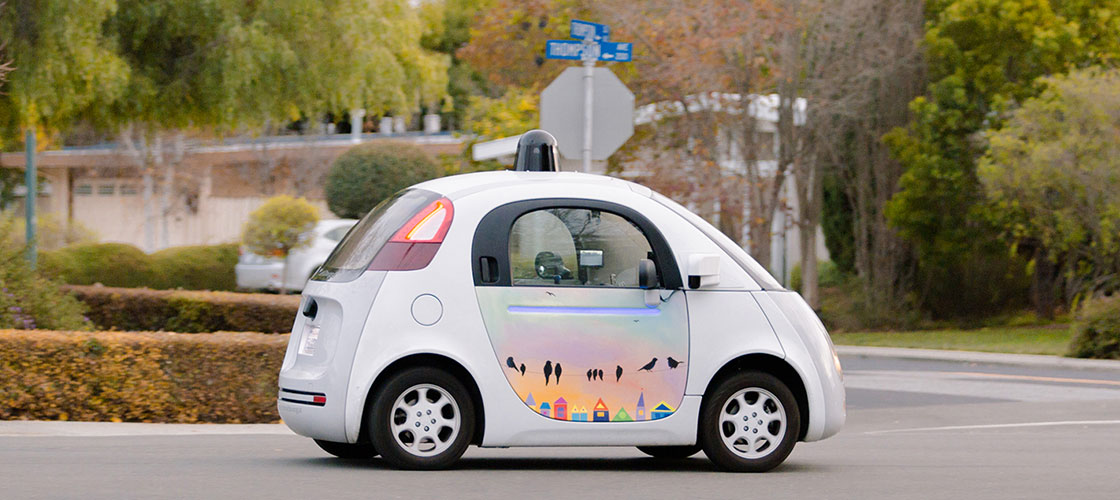
When can I buy a self-driving car?
It might take a decade until fully automated personal vehicles are available to U.S. consumers, but people who live in certain urban areas can already hail experimental robo-taxis on a limited basis. The ride-sharing service Uber during September launched a pilot project in Pittsburgh that dispatches self-driving cars to transport real clients — with an Uber engineer and a backup driver in the front seat ready to take over the controls.
Ford says it will ditch the steering wheel and driver control pedals altogether in a fully autonomous vehicle it plans to roll out to transportation service companies in 2021. General Motors is preparing self-driving Chevrolet Bolt electric vehicles for a test with ride-sharing service Lyft. In a September blog post, Lyft co-founder John Zimmer predicts that fleets of autonomous vehicles "will account for the majority of Lyft rides within 5 years."
In the U.S., a number of companies are developing driverless electric shuttles for use in controlled-access environments, such as campuses, airports and job sites. Local Motors, for example, is test piloting a driverless electric bus in the Washington, D.C., area and plans to test in other cities.
Big rigs are on the radar, too. Otto, a unit of Uber, is developing and testing aftermarket autonomy kits for large trucks. An Otto truck in self-driving mode recently made a 120-mile trip on Interstate 25 in Colorado.
For the consumer market, projections vary. Some automakers aim to sell vehicles that offer semiautomated driving under limited conditions in the early 2020s, and others promise fully self-driving cars by 2030.
BMW, chip giant Intel and tech company Mobileye say they intend to deliver an autonomous vehicle by 2021. Ford plans to sell a personal-use self-driving car by the mid 2020s and expects autonomous vehicles to make up 20 percent of its sales by 2030. Volvo plans to test limited self-driving XC90 SUVs with real customers in Gothenburg, Sweden, as part of its Drive Me project beginning next year. Audi, Infiniti, Mercedes-Benz, Nissan and Toyota also have projects in the works. How much autonomy these vehicles will achieve is unclear.
Elon Musk, Tesla's chief executive, said in October that the company is equipping its three models with the hardware "needed for a full self-driving capability at a safety level substantially greater than that of a human driver." Tesla says it will roll out the new features via over-the-air updates as the underlying software is validated. Musk says his goal is to take a Tesla cross-country in "fully autonomous mode" by 2018.
Regardless of when the first Level 3 or higher automated vehicle hits the market, vehicles with humans at the wheel still will dominate the fleet for many years.
"Even if the U.S. government were to require all new vehicles sold to be autonomous tomorrow, it would take at least 25 years until nearly 95 percent of the vehicles on the road would have the capability," says Matt Moore, HLDI vice president.
For consumers, initial access to self-driving cars might be through ride-sharing services like Uber and Lyft or campus shuttles. Ford, for example, is testing an autonomous vehicle it aims to bring to ride-hailing and ride-sharing services early next decade.
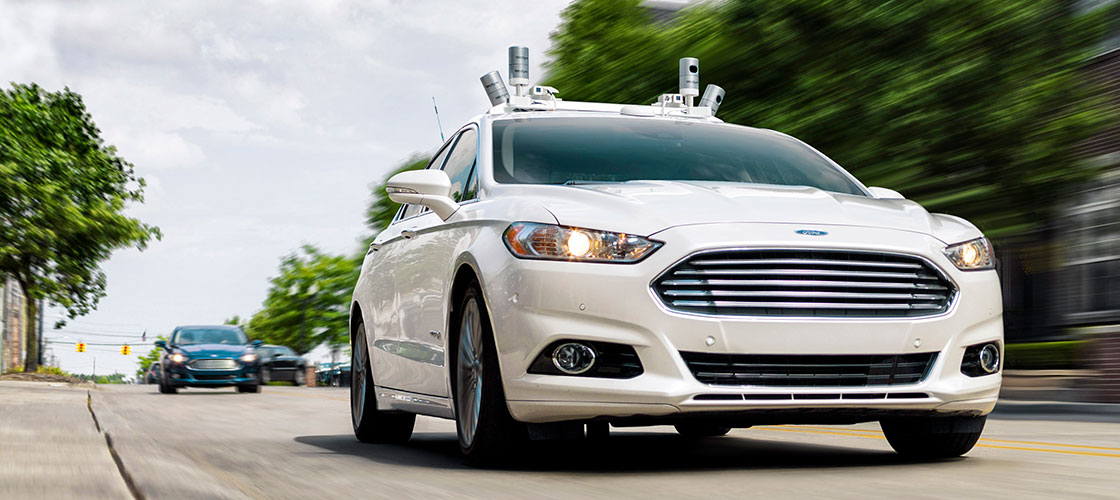
Predicted penetration of autobrake into vehicle fleet
Drivers can expect a mixed fleet of autonomous and conventional cars for decades. Autobrake, for example, won't be in 80 percent of registered vehicles until 2033, even with automakers' pledge make it standard by 2022.
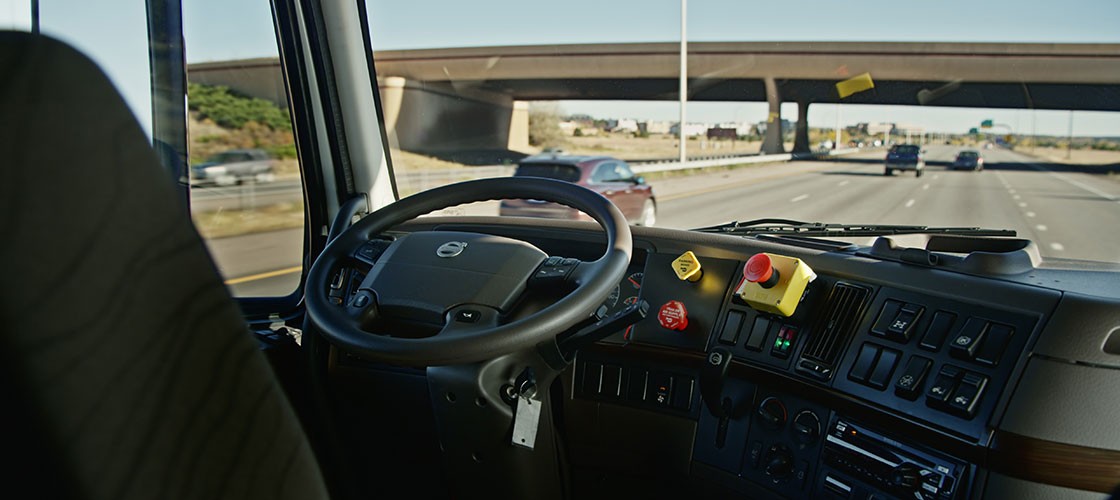
Will drivers need to retake the wheel?
Anything less than fully automated driving will introduce new challenges for the people who ride along. Experimental studies demonstrate that drivers can fail to notice when systems reach their limits and can have trouble retaking control of the vehicle, especially in emergency situations.
For systems that rely on the responsiveness of human drivers, a big question is how can manufacturers limit the risk of handing control back to unprepared drivers?
"A real issue at Level 2 is can the system assure that the human driver continues to drive the car, even on roads where an automated system performs just as well as a human can?" Lund says. Looking ahead, he sees additional challenges.
"In order to get beyond Level 2, crash avoidance systems have to be near-perfect — and they aren't yet," he says. "Current driver assistance and crash prevention systems need to be improved to address a bigger variety of crashes and crash conditions."
Level 3 autonomy presents an inherent difficulty: Drivers are given permission to turn their attention elsewhere but must be ready to take control at a moment's notice.
"Automated systems should be programmed to seek a safe state on their own without depending on human drivers to take over," Zuby says. "There's already plenty of evidence that people abuse Level 2 systems, and at Level 3, drivers are essentially encouraged to stop monitoring the driving environment."
Until the technology matures to the point that reliable Level 4 performance is de rigueur, the best use will be to enhance crash avoidance and mitigation systems.
A fatal crash of a Tesla in the U.S. highlights the technology's current limitations. In the Tesla crash, the Model S ran into the side of a tractor-trailer that had turned left in its path across a Florida roadway in May. The Tesla underrode the trailer, ran off the road and struck fencing and a power pole. The 40-year-old driver died. The Model S was operating in the company's "Autopilot" mode on a clear day.
"Neither Autopilot nor the driver noticed the white side of the tractor-trailer against a brightly lit sky, so the brake was not applied," Tesla said in a June 30 statement. The fatal crash was the first in more than 130 million miles driven with Autopilot switched on, the company said. "Autopilot is getting better all the time, but it is not perfect and still requires the driver to remain alert," Tesla said.
Tesla has since upgraded the software to depend more on radar instead of cameras to improve its accuracy in detecting hazards. The update also adds a feature which disables Autopilot for the rest of the trip if the driver repeatedly ignores requests to hold the steering wheel.
The Model S isn't the first car to run into the side of a tractor-trailer. More than 500 drivers died in similar crashes between 2010 and 2014 in the U.S. An IIHS analysis of fatal crashes involving the front of a car impacting the side of a tractor-trailer indicates that 56 percent of the 531 deaths occurred during daylight hours, while 40 percent occurred when it was dark.
Passenger vehicle driver deaths in front-to-side impacts with a tractor-trailer, 2010-14
| Lighting condition | Deaths |
|---|---|
| Daylight | 298 (56%) |
| Dark | 215 (40%) |
| Dusk or dawn | 18 (3%) |
| Total | 531 |
Lund observes that the Tesla crash demonstrates the need to improve autobrake systems to not only account for a scenario like a large truck crossing the vehicle's path, but also pedestrians and bicyclists. The Model S is one of the vehicles that IIHS staff have been evaluating on the road during everyday driving. One quirk drivers have noted is that the Tesla appears to lose track of lane markings on hills and drift. Similar issues have been reported with systems from other manufacturers.
Can humans and robots share the road?
Minor crashes involving Google cars show the hazards of sharing the road with human drivers. Google has logged more than 2 million miles on public roads with nearly 60 cars in autonomous mode. Since the Self-Driving Car Project's 2009 launch, Google has reported 19 crashes. In most of the cases, the Google car — either a specially equipped Lexus SUV or a prototype autonomous vehicle — was rear-ended by another vehicle, and mostly while stopped at an intersection with the other vehicle traveling below 10 miles per hour.
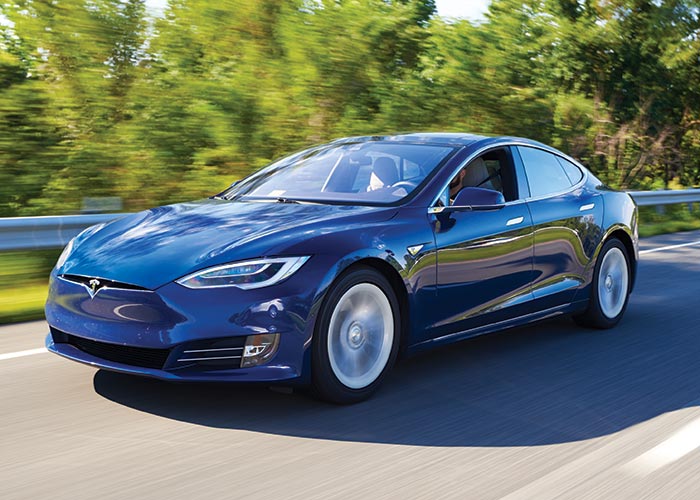
Five collisions involved another vehicle sideswiping the Google car, although two of those involved only side mirror contact with no damage to either vehicle. Google was deemed partially at fault in just one fender-bender involving the car hitting a bus at low speed. Google is testing its prototype cars in Mountain View, Calif., and its fleet of self-driving Lexus RX450hs in Austin, Texas; Chandler, Ariz.; and Kirkland, Wash., in addition to California.
IIHS researchers have compared crash rates for Google's cars in autonomous mode with police-reported crash rates in the same geographic location, specifically Mountain View before 2016. Of 10 crashes Google reported to California officials, three were judged comparable to actual police-reported crashes among human drivers, yielding a crash rate of 2.19 crashes per million miles traveled while under autonomous control. This is considerably lower than the police-reported crash rate in Mountain View, (5.99 per million vehicle miles traveled), where Google cars drive, and comparable to the rate in California statewide (1.92 per million vehicle miles traveled).
How smart vehicles can “see”
Sensors allow vehicles to gather a huge amount of information about what is around them, whether it's other vehicles, fixed objects, lane markings or signs. This information can be put to use in features on the market today, such as front crash prevention and lane departure warning, or can enable autonomous driving.
